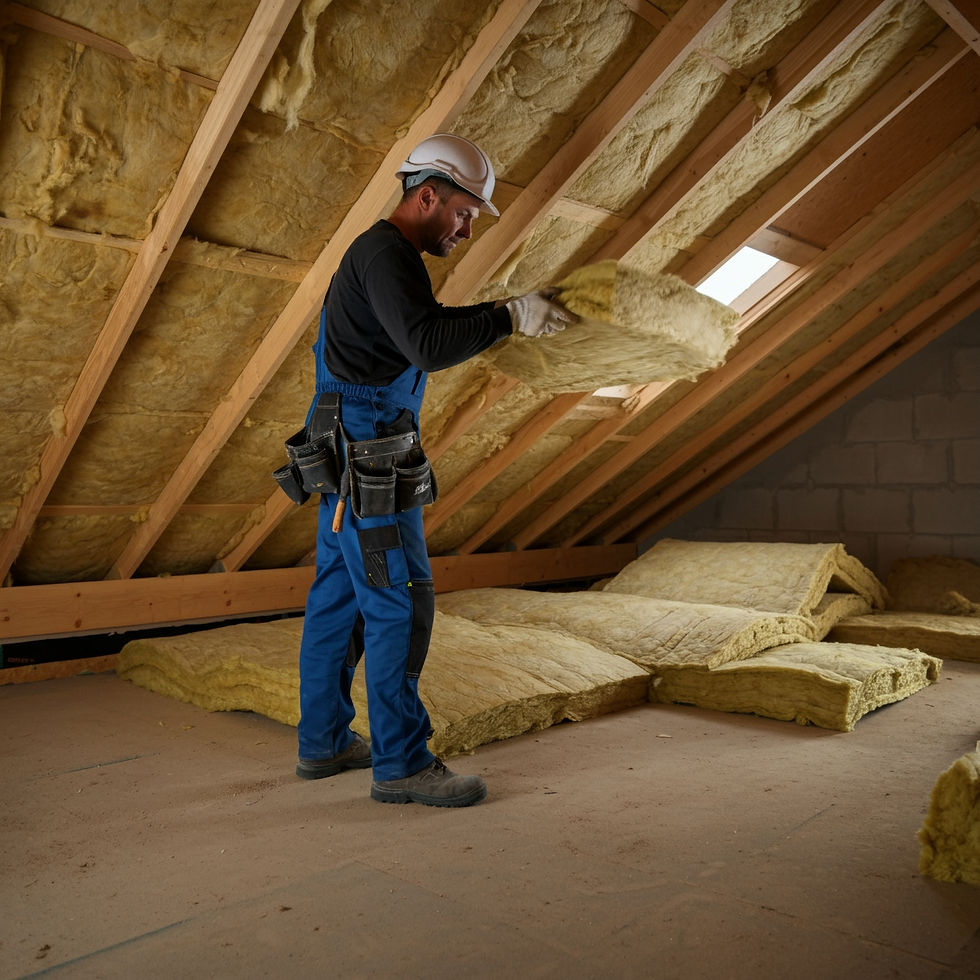How can I insulate my attic effectively?
- info0721046
- Jan 10
- 2 min read

Insulating your attic effectively is one of the best ways to improve your home’s energy efficiency and comfort. Here’s a step-by-step guide to help you do it right:
1. Assess the Current Insulation
Check the type and condition of existing insulation. Look for signs of damage, such as moisture, mold, or pests.
Measure the depth of existing insulation. In many regions, the recommended R-value for attic insulation is R-38 to R-60, which translates to about 10-14 inches of fiberglass or cellulose.
2. Seal Air Leaks
Before adding insulation, seal gaps where air might escape. Common areas to inspect include:
Around recessed lights, plumbing vents, and electrical wires.
Attic hatches or doors.
Chimney and flue gaps (use fire-safe sealants for these).
Use materials like:
Expanding spray foam for larger gaps.
Caulk for smaller cracks.
Weatherstripping for attic doors.
3. Choose the Right Insulation Material
Select a material suited to your attic and climate:
Fibreglass Batt Insulation: Easy to install, good for spaces with standard joist spacing, but less effective in irregular spaces.
Blown-In Cellulose or Fibreglass: Ideal for filling gaps and irregular areas, excellent for retrofitting.
Spray Foam Insulation: Provides high R-value and air sealing, but more expensive and best for professional installation.
Rigid Foam Boards: Useful for sealing small attic areas or covering attic hatches.
4. Install the Insulation
Blown-In Insulation:
Rent a blower machine (usually provided when you purchase insulation).
Wear protective gear, including a mask and goggles.
Spread evenly across the attic floor, avoiding compression.
Batt Insulation:
Lay the batts perpendicular to joists to cover gaps effectively if supplementing existing insulation.
Ensure a snug fit without compressing the material.
Spray Foam:
Best handled by professionals due to the complexity of application.
5. Ensure Proper Ventilation
Good ventilation prevents moisture buildup. Make sure your attic has:
Soffit vents (for air intake).
Ridge or gable vents (for air exhaust).
Unblocked pathways for airflow. Use baffles (vent chutes) if insulation could obstruct soffit vents.
6. Address the Attic Hatch
An uninsulated attic door can be a major source of heat loss. Insulate the hatch using:
A rigid foam board or batt insulation secured with adhesive.
Weatherstripping around the edges.
7. Check Local Building Standards
Verify insulation requirements for your region, especially in terms of R-values and vapor barrier placement.
8. Safety Considerations
Keep insulation away from recessed lighting unless it’s rated IC (insulation contact) safe.
Use a vapor barrier if required for your climate (usually on the warm side of the insulation).
Handle materials safely—wear gloves, long sleeves, and protective gear.
9. Consider Professional Help
If you’re insulating a difficult space or need advanced materials like spray foam, hiring a professional ensures quality and code compliance.
Would you like help estimating materials, selecting specific products, or addressing a particular attic layout?
We can help with all of the above








Comments